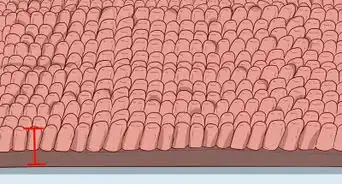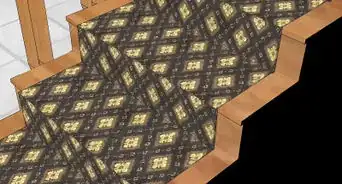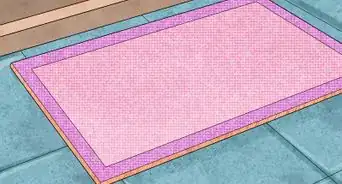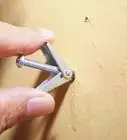This article was co-authored by Peter Salerno. Peter Salerno is the owner of Hook it Up Installation, a professional installation company, which has been hanging art and other objects around Chicago, Illinois for over 10 years. Peter also has over 20 years of experience installing art and other mountable objects in residential, commercial, healthcare and hospitality contexts.
wikiHow marks an article as reader-approved once it receives enough positive feedback. In this case, 92% of readers who voted found the article helpful, earning it our reader-approved status.
This article has been viewed 244,090 times.
Decorative rugs can be a wonderful addition to any room. Rugs are versatile pieces that don't have to be only used on the floor. Mounting rugs on a wall can give the wall a wonderful centerpiece and add personality to any room.
Steps
Hanging a Rug With a Casing
-
1Decide which side of the rug will be the top and bottom. No matter how you put up your rug, you need to figure out the rug's orientation on the wall. For some rugs, it will not matter which side you put up. For others with an irregular pattern, the placement on the wall is very important.
-
2Prepare the rug for a casing to be sewed along the back. A casing is a long, banded strip of fabric that will secure the rod when the rug is mounted. Use a sturdy fabric, such as heavy cotton, linen, or cotton twill rug binding, for the mounting strip.[1]
- This method evenly distributes the weight of the rug, and provides one of the most secure and safe ways to display your rug. Hanging this way can work for any size or height rug, but is best for heavier rugs.[2]
Advertisement -
3Measure the length of material against the back of the rug. The mounting band should cover most of the length of the rug. Allow enough space on each end of the rug for the edge of the rod.
- The amount of space left on each edge of the rug will vary depending on the size of the rug, but it should be at least one or two inches.
-
4Measure the width of the material against the rod. Lay the rod along the top edge of the back of the rug. Place the material for the mounting band over the rod, fitting it snugly against the rod. Mark the sewing line on each side of the band with pins or ink.
- Make sure the rod has room to slide in and out of the band; otherwise, the rod will not be able to be inserted.
- The width of the band shouldn't be very large. The mounting band should fit snugly around the rod.
-
5Hand sew the band to the back of the rug. Try to catch at least two warp threads in each stitch to ensure a good support for the rug.[3] Warp threads are "stretched vertically on the loom and are therefore made of stronger, coarser fibers than the weft threads."[4] Warp threads are the ones found tightly stretched lengthwise on a tapestry.[5]
- Heavy cotton button-hole thread should be used when sewing the casing to the rug.
- Make sure you sew the band in a level line across the back of the rug. A little variation won't hurt, but severe uneven sides can cause the hanging to the crooked. Additionally, having an uneven casing can cause sagging, which can damage your textile.
- You can sew one band across the entire length of the rug, or you can sew multiple bands as short as two feet along the back. Just make sure they are level and close together.
-
6Paint the rod. Before you slip the rod into the newly sewn mounting strip, paint the wood or metal rod. This step prevents the rod from damaging the casing or rug with acids or rust.
-
7Attach the rod mounts to the wall. The rod should come with a mounting kit that includes hooks and screws. Drill the screws into the wall.
- Determine where the rug will be mounted. Since you are drilling into the wall, you want to make sure the placement is correct to avoid unnecessary holes.
- Measure the length of the rod on the back of your rug. The rod should be mounted at each end.
- Use a tape measure to measure the space on the wall that corresponds to the length of the rug you measured earlier. Mark each end on the wall. Before drilling the mounts into the wall, use a level to make sure the two hooks are even.
- If your rug is heavier, you will probably need a sturdier hook to hang it on. When hanging a heavy rug, you need to place the hooks along the studs in the wall for added support. You can easily find the studs in your wall with a stud finder. After detecting the studs, center the rug along two studs. Attach the hooks to the studs.
-
8Hang your rug. The rug should slip easily onto the hooks and rest securely on the wall. If you are attaching the hooks to studs, you may need to sew multiple canvas strips into the back of your rug, leaving a small exposed space for the rod to rest on the hook since the hooks may not be at the end of the rod.
Hanging a Rug With Hooks
-
1Determine which way the rug will be mounted. The placement of the hooks depends on the orientation of your rug. Determine which edge of the rug will be the top.
-
2Prepare your cloth hooks. The hooks should be made with strong fabrics, such as heavy cotton, linen, or cotton twill rug binding. Cut the fabric into rectangles. The width should be about 2/3 wider than the width of your rod.[6]
- To find the length of the hooks, wrap the fabric around the rod. Press the fabric snugly around the rod with your finger. There should be an inch or two between the top of the hook and where the fabric fits snugly against the rod.
- Fold the pieces of fabric vertically into thirds.
-
3Fold the pieces of fabric in half horizontally and sew the ends together. This is the hook for the rod, so the rod should be able to slide in easily. At this stage, the hook will be loose around the rod.
- Now that the rod is in the hooks, press the fabric snug around the rod. Mark this line on the hook with a pen or marker.
-
4Mark the hook locations on the back of the rug. These locations will be where the hooks are sewn into the rug. Make sure to place them close enough together that the rug is adequately supported on the wall.
- Use straight pins to hold the hooks into place on the rug until you sew it into the rug.
-
5Hand sew the hooks into the rug. Make sure to only sew into the back of the rug, so that the stitch doesn't show on the front of the rug.
- The hook should be towards the top of the rug, while the sewn edge should be towards the interior of the rug. When the rug hangs, the hook should not be folded over itself.[7]
-
6Fit the rod into the hooks. One by one, slide the rod into the newly sewn hooks. The rod should easily fit into the pockets, though they may be snug.
-
7Mount the rod hooks onto the wall. Most rods come with mounting hardware that can be attached to the wall with a couple of screws. Determine where you want the rug to be hung in the room before you place the hooks.
- Measure the length of the rod on the back of your rug. You want the rod to be mounted at each end.
- Mark the placement of one of the rug mounts. Use a tape measure to measure the length of the rug you found earlier. Mark that location on the wall. Before drilling the mounts into the wall, use a level to make sure the two hooks are even.
- If your mount attaches to the wall using screws, use a drill to attach the mounts.
-
8Hang the rug on the hooks. The rod should easily fit on the rod hooks.
- If you would like to secure the bottom of the rug, follow the same steps to sew hooks into the bottom of the rug and attach the rod mounts to the wall.
Hanging a Rug With Tack Strips
-
1Prepare four tack strips. Each of these tack strips should be cut to the length of each side of the rug. Use a tape measure to determine how long each side of the rug is, and then cut the tack strips to the appropriate length using a small handsaw or wood snips.[8]
- Tack strips are generally used in carpeting. They are thin boards with sharp tacks sticking from them. Tack strips are designed to hold carpet in place.
- Coat the tack strips in a clear finish or with paint and let dry. This ensures that no acid from the wooden tack strips can damage the back of the rug once it is hanging.
- Tack strips can be purchased from most home improvement stores.
-
2Attach the tack strips to the wall. Using a level to make sure the tack strip is straight, hold the strip where the top of the rug will hang and hammer in the nails along the tack strip. Repeat this process for the remaining tack strips, making sure to measure where each one should go.
- If hanging a heavy rug, these nails should line up with studs behind the wall. Studs in the wall can easily be found using a stud finder.
-
3Nail the rug to the tack strip. Lift the rug against the top tack strip and press it firmly against the strip. Use two upholstery nails to secure each corner of the rug, and then use a third nail to secure the middle. Nail through the rug and into the mounted tack strip. Hammer the upholstery nails into each edge, starting with the sides first and saving the bottom last.
- The upholstery nails are both functional and decorative. They secure the rug to the tack strip and can look very fancy depending on the upholstery nails that are chosen.
Expert Q&A
-
QuestionHow do I get my new rug to lay flat on the wall?
 Peter SalernoPeter Salerno is the owner of Hook it Up Installation, a professional installation company, which has been hanging art and other objects around Chicago, Illinois for over 10 years. Peter also has over 20 years of experience installing art and other mountable objects in residential, commercial, healthcare and hospitality contexts.
Peter SalernoPeter Salerno is the owner of Hook it Up Installation, a professional installation company, which has been hanging art and other objects around Chicago, Illinois for over 10 years. Peter also has over 20 years of experience installing art and other mountable objects in residential, commercial, healthcare and hospitality contexts.
Installation Expert Leave the bottom of the rug unattached for a few days to let it stretch out. If you secure the bottom too soon, it will start to sag. After a few days or a week, attach the bottom of the rug to the wall using nails or command strips.
Leave the bottom of the rug unattached for a few days to let it stretch out. If you secure the bottom too soon, it will start to sag. After a few days or a week, attach the bottom of the rug to the wall using nails or command strips. -
QuestionHow do I hang a wool rug?
 Community AnswerYou can use these instructions for a wool rug.
Community AnswerYou can use these instructions for a wool rug. -
QuestionHow do I hang a round rug on the wall?
 Community AnswerTo hang a round rug on the wall, you would use push pins or command strips. First, mark where you want the rug. Put the top of the rug there and put a push pin or command strip there. Next, stretch it out left and right and place additional push pins there. Then pin the bottom.
Community AnswerTo hang a round rug on the wall, you would use push pins or command strips. First, mark where you want the rug. Put the top of the rug there and put a push pin or command strip there. Next, stretch it out left and right and place additional push pins there. Then pin the bottom.
Warnings
- Be careful when handling the tack strips. The tacks only stick out about a half inch or less but they are very sharp!⧼thumbs_response⧽
References
- ↑ http://www.marlamallett.com/mounting.htm
- ↑ http://www.rugrag.com/post/How-Can-I-Display-my-Rug-as-a-Wall-Hanging.aspx
- ↑ http://www.marlamallett.com/mounting.htm
- ↑ http://www.heddels.com/dictionary/warp/
- ↑ http://www.wisegeek.org/what-are-warp-and-weft.htm#didyouknowout
- ↑ http://prudentbaby.com/2012/10/baby-kid/how-to-hang-a-rug/
- ↑ http://prudentbaby.com/2012/10/baby-kid/how-to-hang-a-rug/
- ↑ http://www.thisoldhouse.com/toh/how-to/step/0,,20416130_20834908,00.html
About This Article
The easiest way to hang a rug on a wall is to purchase 4 tack strips, which are thin boards with sharp tacks sticking from them. Then, cut the tack strips to the length of each side of the rug, and coat them in a clear finish or with paint to prevent damage to the rug from the wood acid. Once the finish or paint has dried, attach the strips to the wall by hammering in the nails along the strip. Afterwards, hammer in 2 upholstery nails into each corner of the rug, and use a third nail to secure the midpoint between each corner. To learn how to hang a rug without tack strips, including how to hang a rug with cloth hooks, read on.
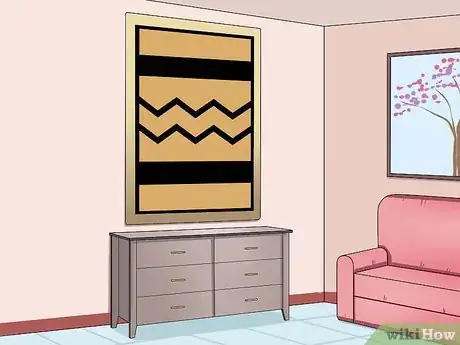
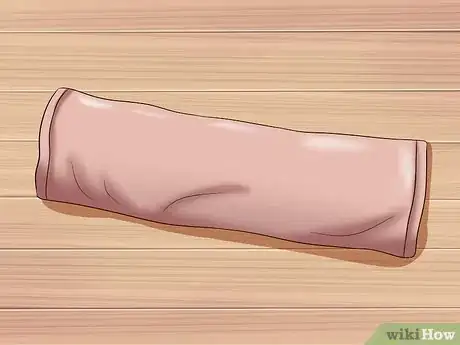
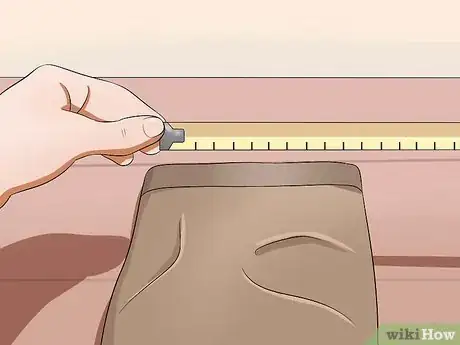
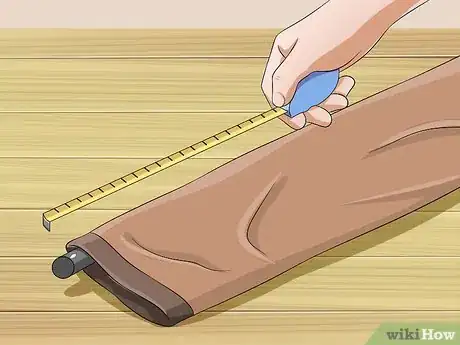
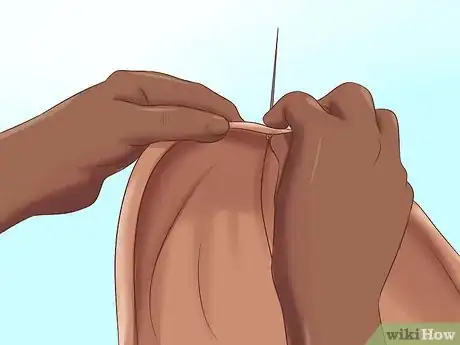
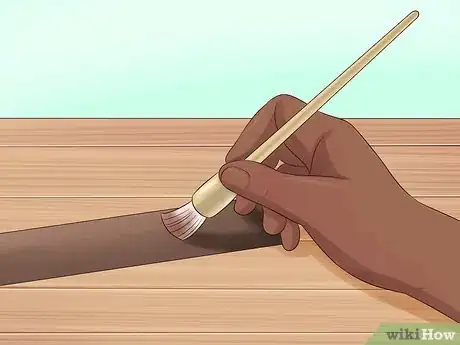
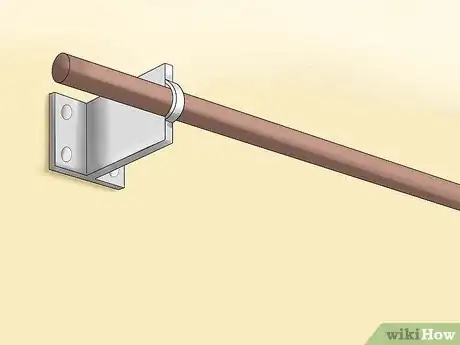
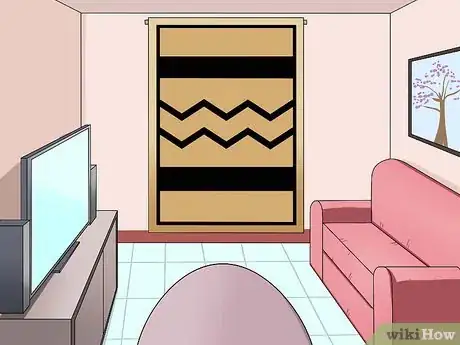
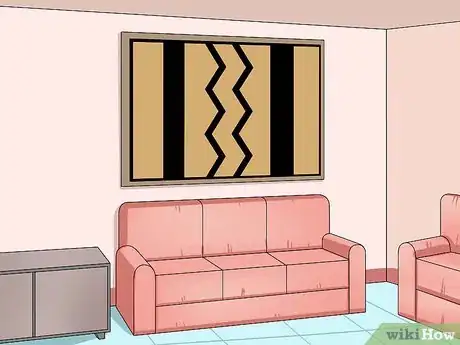
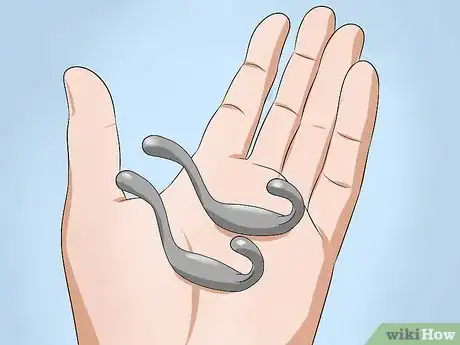
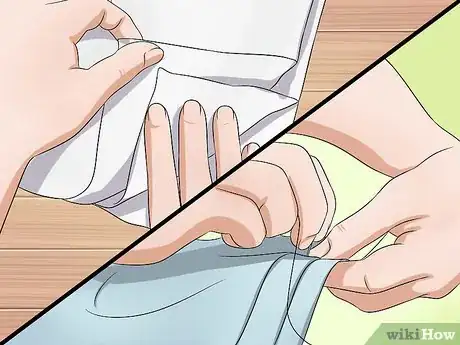
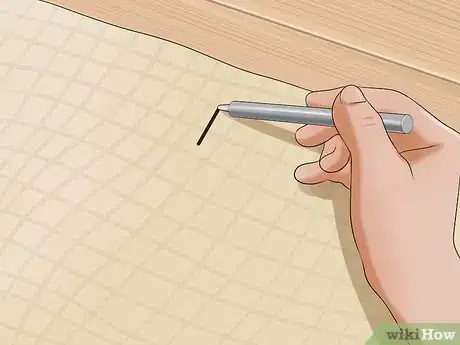
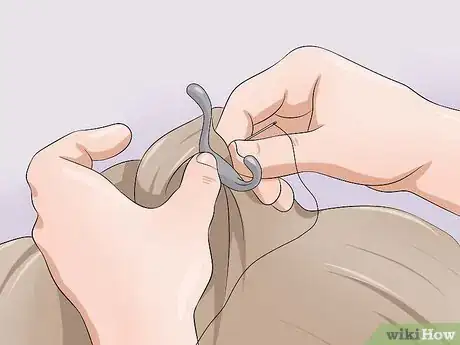
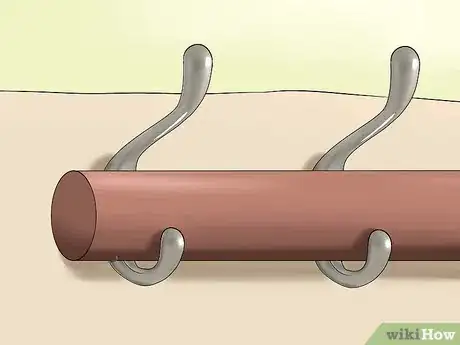
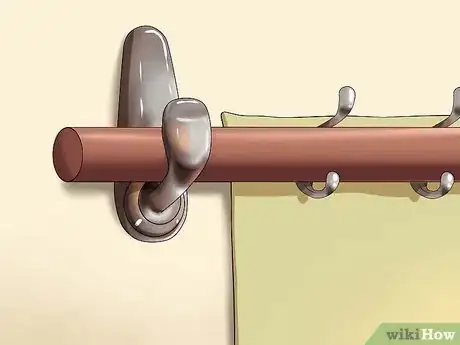
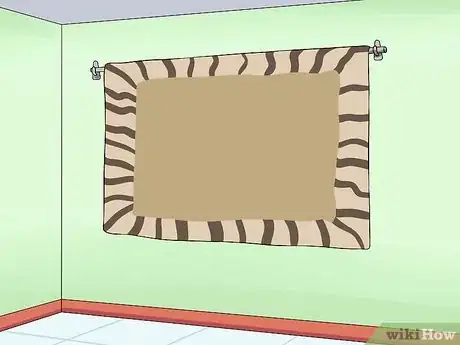
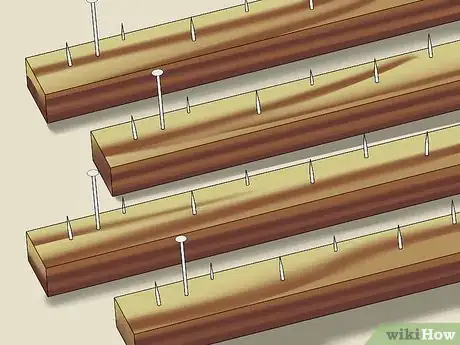
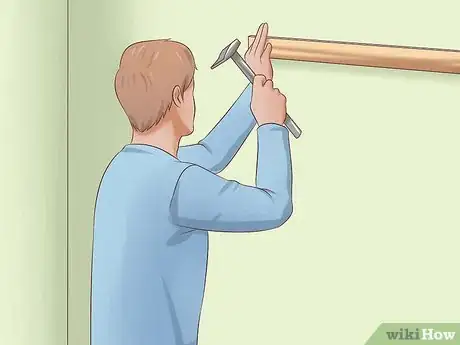
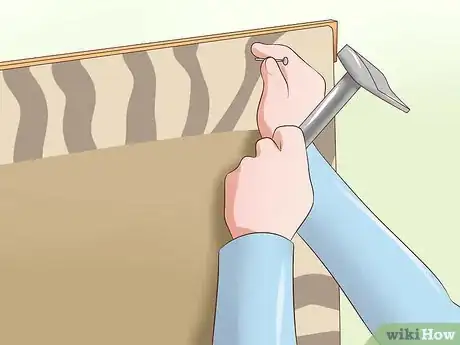
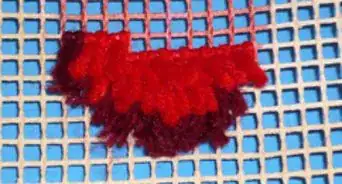
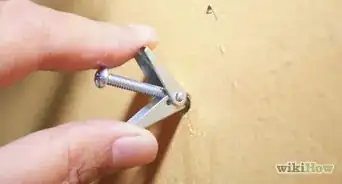
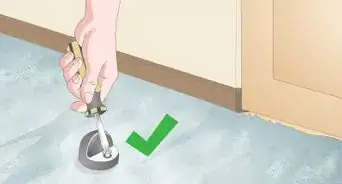
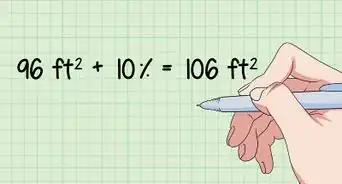
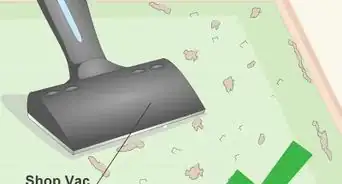
-Step-19.webp)

